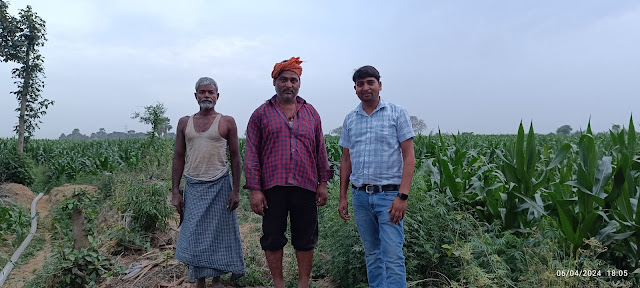Maize, also known as corn, is a vital crop with diverse uses around the world. Understanding the process of maize cultivation from field preparation to harvest can help farmers achieve optimal yields and quality. Based on insights from a seasoned farmer, here is a comprehensive overview of the steps involved in maize farming:
1. Field Preparation
The journey of a successful maize crop begins with meticulous field preparation. Farmers use tractors to plow and till the land thoroughly. This process helps in breaking down the soil, removing weeds, and creating a favorable seedbed for planting.
2. Fertilization
Fertilization plays a crucial role in maize cultivation. The farmer mentioned the use of Diammonium Phosphate (DAP) and Potassium (Potas) fertilizers. DAP provides essential phosphorus, promoting root development and early plant growth. Potassium contributes to overall plant health and resilience. Proper fertilization ensures that the maize plants have the nutrients they need to thrive.
3. Planting
Seed selection is key to a successful maize harvest. Our farmer uses approximately 9108 seeds per field, which has proven to produce excellent yields. Planting is typically done in rows to optimize spacing and facilitate growth. Adequate seed depth and spacing are critical factors for healthy maize plants.
4. Irrigation
Maize requires regular watering throughout its growth cycle. The farmer mentioned watering the crops about 10 times until they are ready for harvest. Consistent and timely irrigation ensures optimal growth, especially during critical stages like germination, flowering, and grain development.
5. Weed Control
Weeds can compete with maize plants for nutrients, water, and sunlight. Effective weed control is essential to prevent yield loss. Farmers employ various methods, including manual weeding and herbicide application, to keep their maize fields weed-free.
6. Harvesting
Maize is harvested using specialized equipment such as harvesters, which efficiently cut and collect the matured crop. Timing is crucial for harvesting to ensure maximum yield and quality. Our farmer sells the harvested corn locally to merchants, fetching a price ranging from 1000 to 1200 per quintal (100 kilograms).
7. Post-Harvest Management
After harvesting, proper post-harvest management is essential to preserve the quality of maize. This includes drying the corn adequately to reduce moisture levels and prevent spoilage. Maize can be stored in grain bins or silos to maintain its quality until it is ready for further processing or sale.
Conclusion
Maize agriculture demands careful planning, meticulous execution, and continuous monitoring. By following these steps - from field preparation to harvest and beyond - farmers can optimize their maize production and contribute to food security and economic growth. The insights shared by our farmer provide valuable guidance for anyone interested in venturing into maize cultivation or seeking to enhance their farming practices.
Maize remains a staple crop globally, serving as a source of food, feed, and industrial raw material. With sustainable farming practices and continuous innovation, maize farming holds promise for meeting the growing demands of a dynamic world.

.png)
